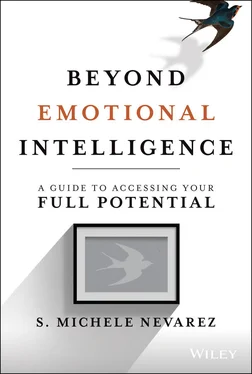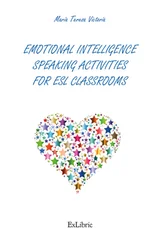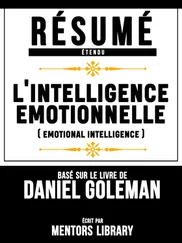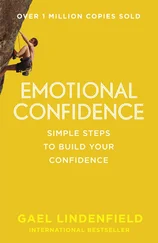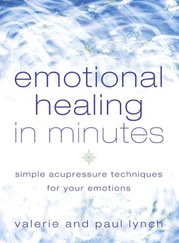Emotional Intelligence Is Here to Stay
When we look at the heart of what is both meaningful and enduring about emotional intelligence, I am admittedly biased. Within the context of this rendering of EI, the foundational skills hold the greatest potential not only for developing each of the remaining EI competencies but for developing skillfulness in anything we do. We termed the remaining EI competencies that did not meet these parameters “the relationship skills of emotional intelligence”: influence, inspirational leadership, teamwork, conflict management, achievement orientation, coaching and mentoring, and organizational awareness.
While arguably important skills to have—though I've worked with plenty of leaders who don't exhibit them who were catapulted to the top of their organizations—they are resultant, or outcome-based in nature. In other words, they are the potential outcomes of having done a lot of things well, many of which hinge on the foundational skills of EI. Whereas others are a function of specific skill-based training and frequency and variance of their use. They could just as easily be updated or swapped out with other competencies or terms to mean basically the same thing or to include skill sets deemed valuable based on the context. But either way, irrespective of the words we give them, we would still be dependent upon one or more of the foundational skills of EI in order to do them well, or at all. My view is if you train the dog, he'll be more likely to behave wherever you take him. An entertaining correlate to that, which I didn't make up, is, “If you like the dog, you must accept the fleas.” In my estimation, it's a lot like learning a new language. If you have the basic structure and grammar down, you can go to that country and quickly pick up more vocabulary and soon you'll be improvising, whereas if you go knowing nothing about the basics and try to engage in discussions right off the bat, good luck with that. That may work if you're 10 years old, but probably not if your age is a multiple of 10.
The reason I've taken the time to mention where I am coming from relative to the topic of emotional intelligence is because this book represents an evolution in my own thinking, not only about EI but of my understanding of the neuroscience of emotions and their profound role within perception itself. My own training on the topic of EI stems not only from my graduate studies but from having worked for 25 years in companies like the ones whose competency models helped define this particular articulation of EI. I was responsible for implementing leadership competency models and making sure people's performance reflected them. When I saw this wasn't happening nearly as much as one might think, I realized defining what makes a good leader is a different value proposition than what it takes to become one.
I also observed that one of the most common reasons leaders fail to take on board what they've conceptually learned is due to a lack of specificity and practical application of what they are being trained on and the runway and needed forums to practice these new skills. The way we tend to teach doesn't adequately account for learners' need to practice new habits and skills while they are learning about them. Rather our approach typically emphasizes declarative or intellectual knowledge over and above procedural knowledge or the knowledge about how to do or apply something. We tend to overlook the supporting mechanisms needed to create both the conditions within ourselves and our immediate environment as we apply and learn new ways of being. Like IQ, while helpful to have, just because you have a competency structure that supports an individual development plan or an organizational strategic plan with key performance indicators (KPIs) to chart the path ahead, doesn't guarantee you'll arrive at the desired destination or have a successful journey along the way. Far from it. It takes much more than simply documenting or articulating your goals, although I'm not suggesting it isn't a good place to start. Mapping out a plan is a great first step, so long as you don't confuse map making with the emergent and ongoing nature of change itself.
The key is whichever model of EI we ascribe to, it shouldn't just point the way; it needs to give us specific practices and methods for working with our own minds. Moreover, our emotions are but one factor—albeit a critical one—in the constellation of what determines how we behave. It turns out, our capacity to reframe and shift both our perceptual stance and our interpretation of what we perceive are vital to the conversation. That's the part of the discussion we're delving into now in this book. Whatever we do, let's not leave the EI competencies at the level of mere words or concepts trapped within the confines of a framework or their colorful bubble graphics. Let's also strive to live and embody them!
The Neuroscience of Emotion
While there are many neuroscientists engaged in researching how our emotions intersect with what we understand about the brain, I am most familiar with and take my lead from Richie Davidson's work. And though I've only recently become acquainted with Lisa Feldman Barrett's research, she makes an extremely compelling case in her book How Emotions Are Made for the constructed basis of emotions in which she covers vast territory between the historical and current understanding of the human brain, emotion, and perception itself (Barrett, 2017). Her departure from classical notions of emotion processed by a triune model of the brain in favor of a whole brain, constructed view of emotions, resonates with my own assessment of where we have wherewithal and say in the rather complex process of perception and interpretation. 4 She offers readers both a novel and sophisticated articulation of a topic we've had the collective tendency to misunderstand—despite the feeling I had at times like I was wearing an itchy, wool sweater as I had to inch my way out of positions no longer tenable. Meanwhile, my head has been left delightfully spinning as I continue to contemplate and puzzle the practical implications of her brilliant work. Had it not been for me rescuing her book from the bookshelf where it had been peering out at me for well over a year, whispering “read me,” the one you're reading now would likely not have had the richness nor depth of scientific understanding to lend to the practical insights and observations underlying the methods I've spent the past six years developing to train our coaches and clients to operationalize EI within their own lives.
And though I'm not a neuroscientist nor have I been able to visit with her yet about her work—though I'd very much like to—I'm admittedly flying a bit by the seat of my pants. I've done my best to synthesize and integrate key insights from her research into how I'm thinking about my own work and theories as they continue to evolve and mature, not to mention how I'm parsing the science with my own understanding of the nature of reality relative to my Buddhist practice. It has been both remarkable and entertaining for me to see the notable parallels between the latest neuroscientific findings on perception and emotion and the insights I've gleaned from having studied and practiced Tibetan Buddhism for more than half of my life—that and the uncanny overlap with certain themes from the remake of Battlestar Galactica , a television series my boyfriend coerced me into watching at the outset of the pandemic, which I'm now completely hooked on. All this is to say, let this serve as my apology in advance if I've missed the mark in any way in my attempts to explore the practical implications of any of the scientific insights I've tried to incorporate along with her absolutely remarkable contribution to how we conceive of our own emotions. Now, let's look at both schools of thought on emotion, the classical and constructed views, summarized by me in my own words as she portrays each in her book.
Читать дальше
